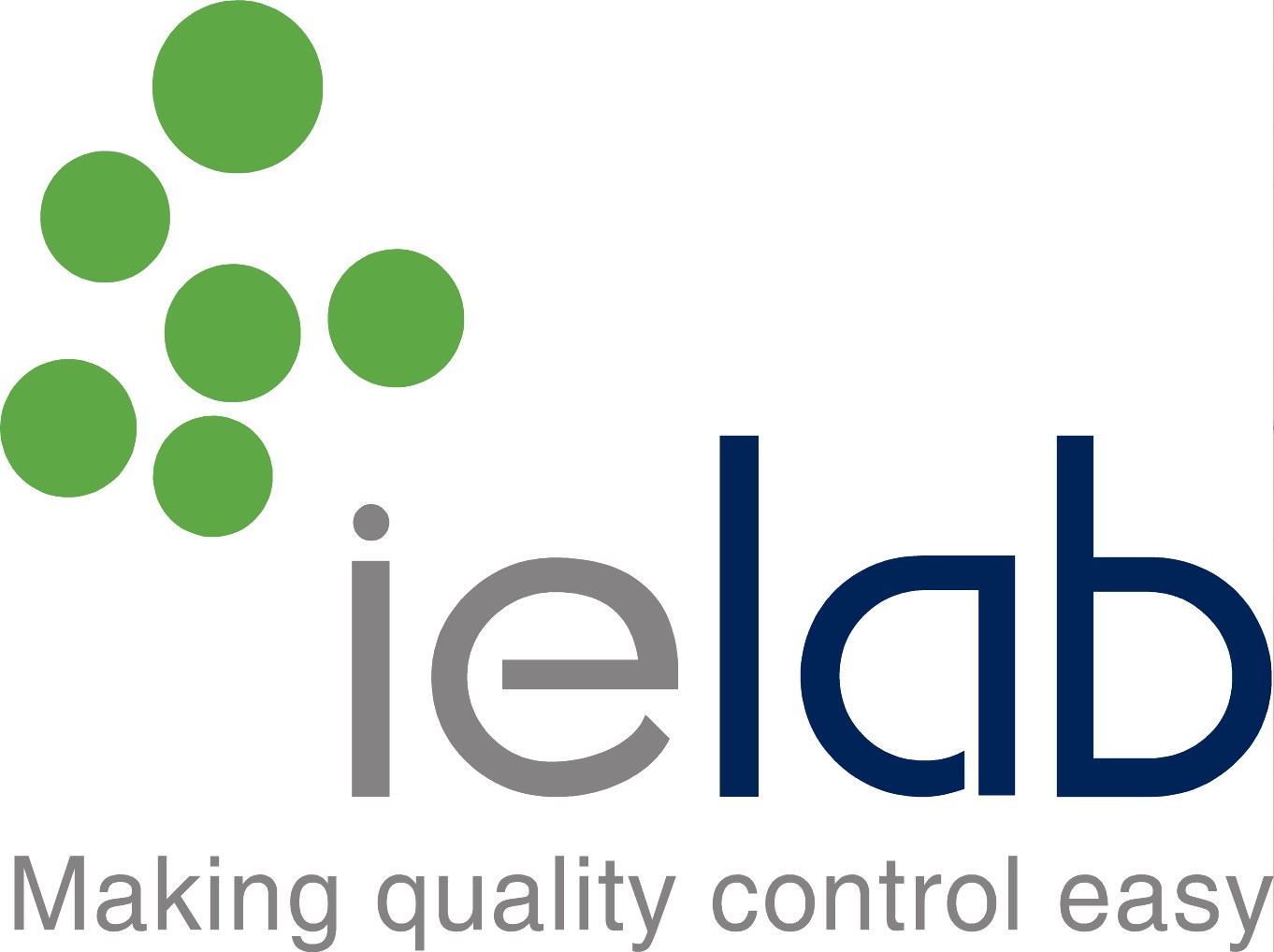Frequently Asked Questions
Following UNE-EN ISO 17034:2017 Standard, a reference material is a material sufficiently homogeneous and stable with respect to one or more specified properties, which has been established as suitable for the intended use in a measurement process.
Following UNE-EN ISO 17034:2017 Standard, a certified reference material is a characterized reference material by a valid metrological procedure for one or more specified properties, accompanied by a certificate of reference material that provides the value of the specified property, its associated uncertainty and a statement of metrological traceability.
Following UNE-EN ISO 17034:2017 Standard, the uses of a reference material can include: the calibration of a measurement system, the evaluation of a measurement procedure, the assignment of values to other materials and the control of quality.
ielab as a Producer of reference materials offers both chemical and microbiological physical reference materials.
Many of the ielab physical-chemical materials are certified according to the guidelines established in the ISO 17034:2017 Standard, based on the results obtained from the accredited PT Schemes by ENAC and have been specially designed to facilitate the quality control tasks carried out in the diagnostic laboratories.
The ielab microbiological reference materials are quantified by certification tests carried out by expert laboratories in accordance with the standard EN / ISO / IEC 17025 and following the guidelines established in the ISO 17034:2017 Standard for producers of reference materials.
ielab has several lines of microbiological reference material: general microbiology, pharmacopoeia, environmental and autochthonous isolates and materials for molecular biology (PCR and DNA).
Yes, in the case of physical-chemical reference materials, ielab has certified sludge materials accredited by ENAC.
In the case of microbiology, ielab has a line of certified reference materials accredited by ENAC (Line BACredi)
The accreditation is an added value to the reference materials of ielab as they have been submitted by ENAC to a rigorous control and also manufactured with all the technical requirements that their production implies based on the ISO 17034:2017 Standard. These materials are widely used in the quality controls carried out in the laboratories.
The physical-chemical ielab reference materials are obtained from PT Schemes accredited by ENAC, in which a large number of laboratories of both national and international origin participate. These participants have different work methodologies, which is why they provide great robustness to the results obtained.
Most of the physical-chemical materials supplied are of natural origin with concentrations similar to the actual samples received in laboratories and are presented in 500 mL or 100 mL containers in the case of liquid standards and in 65 mL containers in the case of solid patterns.
Among the main advantages of the physical-chemical reference materials are the following:
– Great quality guarantee: For its production, the guidelines established in the ISO 17034:2017 Standard are followed, statistical criteria defined in the ISO GUIDE 35 have been used to obtain the value of the property and the certificate complies with the ISO GUIDE 31, being ielab the first Spanish company accredited in the sector as a Producer of Reference Materials.
– Natural: Most of the materials supplied are of NATURAL ORIGIN, allowing to reproduce usual test conditions.
– Stable: The stability of the samples is checked according to what is indicated by ISO 13528: 2015 and is analyzed by a method accredited under the EN ISO / IEC 17025 standard.
– Homogeneous: Statistical studies of the variability are carried out as detailed in the ISO GUIDE 35 and according to the IUPAC protocol, analyzed by a method accredited under the EN ISO / IEC 17025 standard.
– Flexible: There are materials for different matrices and parameters.
–BACONTROL
Description: quantitative material in which each tablet contains a number of viable and culturable cells, obtained by the manufacturer itself under the specific test conditions in the Analysis Report.
Applications: it is the appropriate material for carrying out routine quality controls, stories such as process controls, creation of control charts or quality controls of culture media.
Expiration: it has an expiration of 12 months from the date of delivery of the lot, which is specified in the Analysis Report that accompanies the product. The batches supplied will have at least 6 months of expiration.
Presentation: Served in boxes with 10 vials (BAControl-10), containing one tablet per vial or in dispensers containing 5 tablets (BAControl-5).
–BACUANTI
Description: it is a certified quantitative material in which each tablet contains a number of viable and cultivable cells, which is obtained from a certification study in which a network of accredited laboratories participates on the basis of the EN ISO / IEC standard 17025
Applications: it is the suitable material for the validation of quantitative methods and quality controls.
Expiration: it has an expiration of 6 months from the date of delivery of the lot, which is specified in the Certificate of Analysis that accompanies the product. The lots supplied will have at least 3 months of expiration.
Presentation: it is served in 5-pill dispensers.
In the case of molecular biology, we can find the following formats:
• BACuanti PCR is especially indicated for the control of quantitative processes based on PCR.
• BACuanti DNA is especially indicated for the amplification control of quantitative methods based on PCR.
–BACUALI
Description: it is a qualitative material in which the identity of the microorganism supplied is guaranteed.
Applications: appropriate to validate qualitative methods and to carry out quality controls in which quantification is not required.
Expiration: has an expiration of 12 months from the date of delivery of the lot, which is indicated in the Analysis Report that accompanies the product. The batches supplied will have at least 6 months of expiration.
Presentation: it is served in 5-pill dispensers.
-Simplicity: The preparation of the material is extremely simple since it has a format in tablets (except BAControl-DNA) that is supplied in a sterile plastic device very easy to use or in individual vials, avoiding the need for multiple manipulations, also accompanied by a quick guide to use and the corresponding certificate and / or analysis report.
-Rapidity: Bacterial suspensions with known counts are available in only 3 steps and 10 minutes.
-Easy conservation: In conventional freezer (-20 ± 5 ºC).
-Safety: There is no risk of contamination, since the manipulations are reduced to a minimum.
-Traceability: The reference strains used come from different Type Culture Collections, having a pass from the original strain used (reserve strain).
-Known concentration: in the Report or Certificate of Analysis, the concentration in the material is indicated.
-Flexibility: It exists in different formats and for different microorganisms, being available in three concentration ranges: low, intermediate and high.
-Customization: In addition to the available species, the possibility of preparing reference material of other microorganisms and at a predefined concentration by the client is offered.
-Quality: ielab has ISO 17034 accreditation as a producer of Reference Materials with scope 1 / PMR001.
Their handling and preparation is very simple, and in the case of quantitative materials, they contain a predetermined number of cells of different microorganisms.
They avoid having to prepare, conserve and title microorganism cultures, reducing laboratory work and ensuring the reproducibility of the control tests performed.
They also provide a very useful tool in all those tasks of quality control performed by microbiology laboratories in any field.
In the case of accredited laboratories, yes, while in the other laboratories it is advisable to carry them out whenever you want to ensure the quality of the results obtained.
It consists of the experimental process of evaluation of the characteristics of a measurement procedure and verification that said characteristics meet a series of pre-established requirements.
According to the UNE-EN ISO / IEC 17025 Standard, the laboratory must establish a quality control to monitor the validity of the tests. Quality controls can be classified into two large groups, that of internal controls, performed by the laboratory itself, and external controls or proficiency tests. All quality assurance activities should be planned so that, over time, an adequate representation of the variety of matrices with which the laboratory works is included.
The implementation of good quality assurance programs provides credibility to the results provided by the laboratory.
They consist of all the procedures performed by a laboratory for the continuous evaluation of their work. The main objective is to ensure the consistency of the results obtained daily and compliance with established criteria.
They are necessary to demonstrate that it controls the variability, for example between analysts and between equipment or materials and may include the use of inoculated samples, the use of reference materials, the use of replicates and the performance of cross-counts between analysts.
Although there is no guide or standard that establishes a minimum periodicity, the laboratory should establish a quality control program that makes it possible to unequivocally ensure that the test methods are under control, and the analytical results generated are truthful.
Laboratories must participate regularly in proficiency tests consisting of the simultaneous analysis of homogeneous, stable and representative samples, by different laboratories, thus being able to detect deviations in the results obtained and verify the validity of the entire quality system.
ielab has some exclusive distributors both internationally and nationally, which you can consult on our website and get in touch with the one that corresponds to you. If you are from an area without a distributor, you can place your order through the e-mail: comercial@ielab.es
Currently, the production of reference materials from ielab is certified under the ISO 9001 standard. In addition, ielab has accreditation as a producer of reference materials under the UNE-EN ISO 17034:2017 Standard, in which statistical criteria defined in the ISO Guide 35 have been used to obtain the value of the property and the certificates comply with the ISO Guide 31.
In case of physical-chemical reference materials, all come from PT Schemes.
In case of microbiological reference materials are exclusively produced following the ISO 17034:2017 Standard for laboratory quality control applications.
ielab recommends its reference materials for internal use of the laboratory itself in any application that is considered as technical tuning, validation of test methods, etc.).
The reference materials must be kept as specified in the certificate and / or User’s Guide supplied with the material itself. In the case that these guidelines are not followed, their properties may be altered.
For each type of material, you can find this information in our catalog of reference materials. In any case, this information is always detailed in the analysis certificate/report attached to the material itself.
Today, there is not any provider of reference materials accredited by ENAC that produces similar reference materials in the sector at the national level, but other suppliers accredited by other Accreditation Bodies such as UKAS can be found.
The BACuanti-PCR material indicates in its certificate the concentration as «genomic units».
In the quantitative PCR or «real time» (qPCR) a specific fragment of the genome of the target microorganism is detected and the result is usually given as «copies». Knowing the number of times that fragment is repeated in the genome, the number of genomes or «genomic units» present in the sample can be calculated.
In those cases, in which the gene that is detected in the qPCR is a single copy, that is, when each cell has a single copy of that fragment of the genome, the number of genomic units detected is equivalent to the number of cells present in the sample analyzed.
In this sense, the results of the analysis of the reference material BACuanti-PCR of Legionella pneumophila are obtained by means of qPCR in which a single copy gene is used as a target. Therefore, in this case, in addition to «genomic units» the expression of the result can be accepted as «cells».



